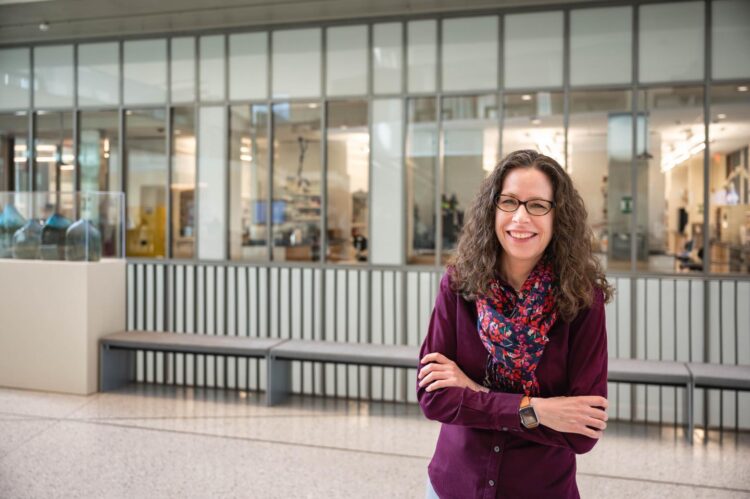National Science Foundation funds investigation of UTA researcher’s cancer photodrug
A chemist at The University of Texas at Arlington is developing a cancer medication that uses light to target and destroy tumor cells in a process known as photodynamic therapy (PDT).
Sherri McFarland, professor of chemistry, and her team of researchers have developed a chemical compound containing the transition metal ruthenium. When ruthenium absorbs light, it produces a powerful oxygen reaction. When the ruthenium-containing molecule, light and oxygen all interact with one another, they become highly selective cancer-fighting agents that do not affect surrounding healthy tissue.
McFarland’s photodrug, TLD-1433, is currently in a phase II clinical study for patients with recurring bladder cancer that has proven resistant to traditional therapies.
“TLD-1433 is extremely effective at killing cancer cells and is orders of magnitude better than similar compounds designed to achieve the same results,” McFarland said. “In general, these types of photosensitizers are oxygen-dependent. While TLD-1433 is very powerful when oxygen is present, it can also destroy certain types of cancer cells in hypoxic environments where oxygen is lacking.”
The National Science Foundation awarded McFarland a $440,000 grant to investigate the photodrug’s unusual effectiveness in low-oxygen environments. Her research team has hypothesized that TLD-1433 operates by an unknown mechanism that is facilitated by oxygen when it is present but does not require it.
“The fact that some of the most aggressive and drug-resistant tumors are hypoxic is a challenge for cancer therapy in general as well as PDT,” she said. “If we can discover an alternate mechanism that persists even in low-oxygen environments, that would mean these agents could be used to treat hypoxic tumors and allow health care providers to apply light-based therapy to the most difficult-to-treat tumors.”
For patients with non-muscle invasive bladder cancer like those in TLD-1433’s phase II clinical study, photodynamic therapy provides hope when other cancer treatments are unsuccessful.
“The study enrolls patients who have failed standard therapies. They would have already had immunotherapy and multiple surgeries, but their cancer persists,” McFarland said. “The recommendation at that point is removal of the bladder. That is what they are facing.”
A cancer survivor herself, McFarland said her goal is to provide more treatment options for cancer patients, particularly for those whose cancer is unresponsive to traditional therapies.
“One area of focus now is to gain an understanding of why TLD-1433 works so well. Then, we can design even better light-activated drugs in the future,” she said. “If we can make a photodrug that is potent and selective, providers can dose at much lower levels, making the medicine both safer and cheaper to produce. More importantly, at lower doses, we could minimize side effects for the patients.”
A key element of the creation of potent photodrugs is experimentation with new chemical compounds. On McFarland’s team, this task falls to Wesley McDonald, a senior undergraduate researcher who has worked in the lab for two years.
“My work is exploratory. I synthesize brand new chemicals so that we can see which combinations work and which don’t,” McDonald said. “I’m the first step on the ladder to producing more effective PDT treatments for cancer patients.”
After attending one of McFarland’s guest lectures in the College of Science, McDonald approached her and asked if she had any open positions in her lab. A former pre-med student, McDonald said working with McFarland influenced a new career path.
“Dr. McFarland gave me a lot of responsibility, and I fell in love with research,” he said. “After graduation, I hope to continue working here and earn a Ph.D. from UTA.”
When he is not testing new compounds, McDonald creates batches of TLD-1433 to assist with photomedicine exploration in labs across the United States and beyond.
Pending results from the clinical study, McFarland hopes TLD-1433, along with other photomedicines, becomes a leading treatment option for patients with aggressive and unresponsive cancers.
“A lot of people don’t know that there are alternative treatments like these light-based therapies. Even your typical oncologist may not know about PDT,” McFarland said. “When we think of cancer treatment, we think of chemotherapy, radiation, immunotherapy and surgery. But if you have a tricky form of cancer, there are a number of emerging alternative therapies available.”
###
Media Contact
Linsey Retcofsky
[email protected]
Original Source
https:/





